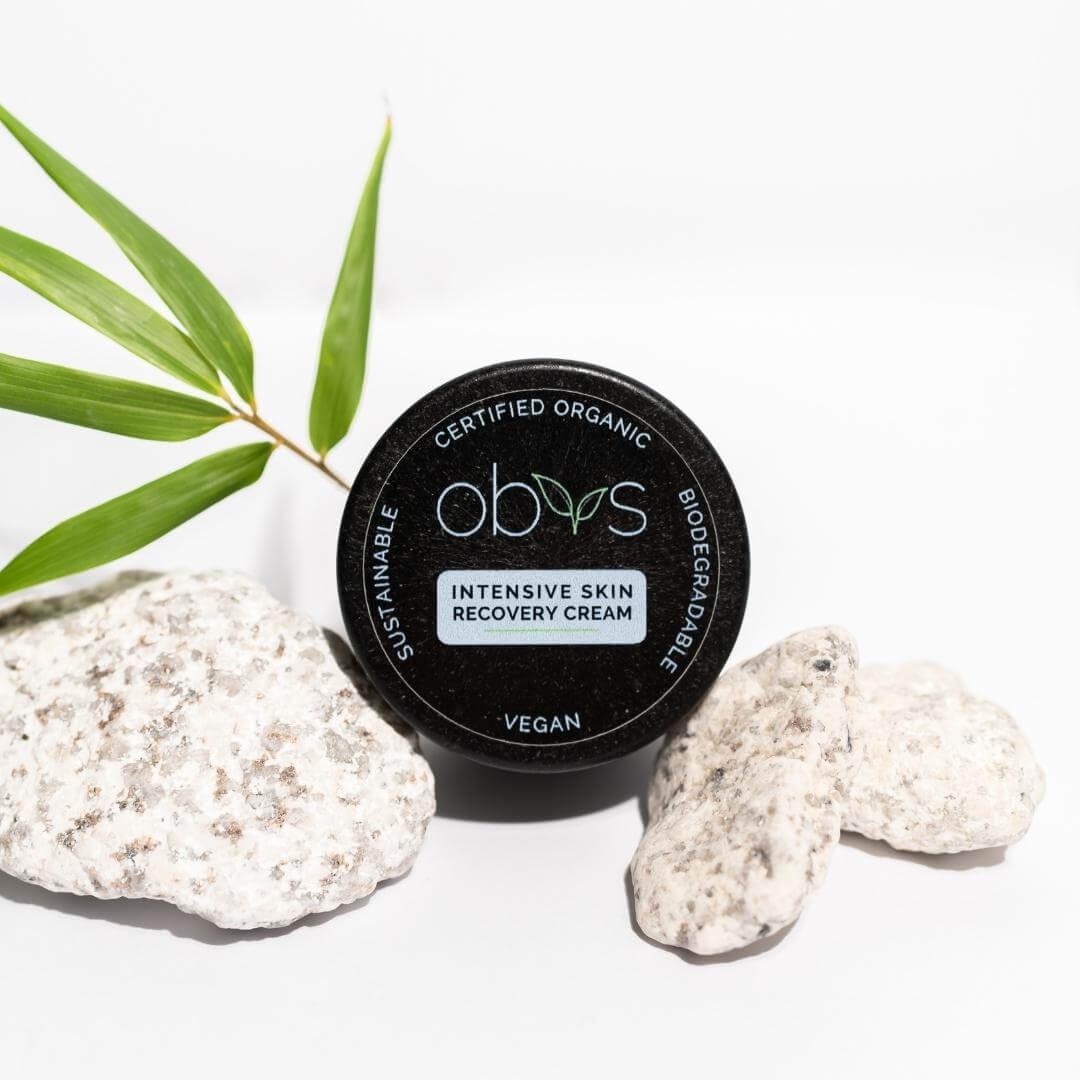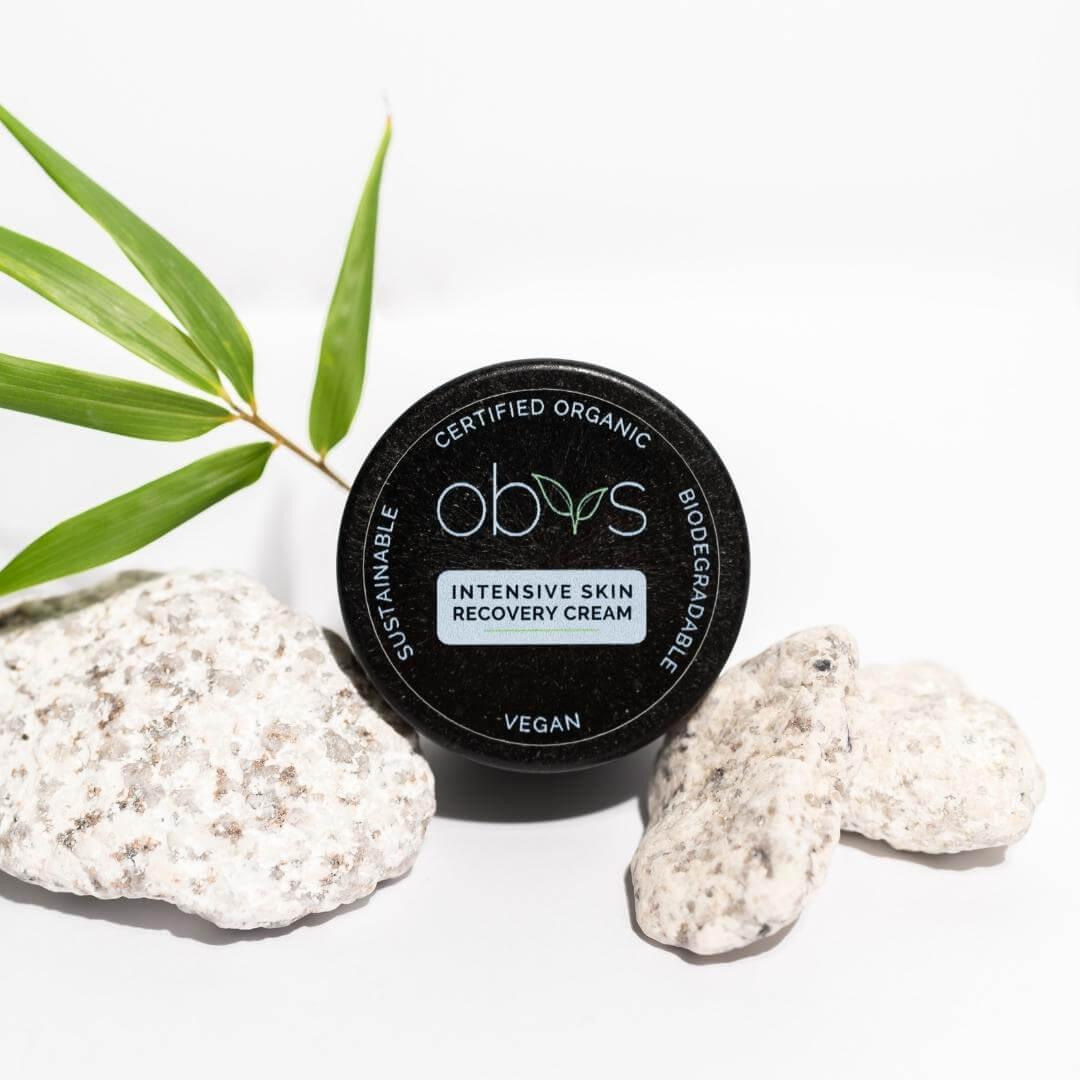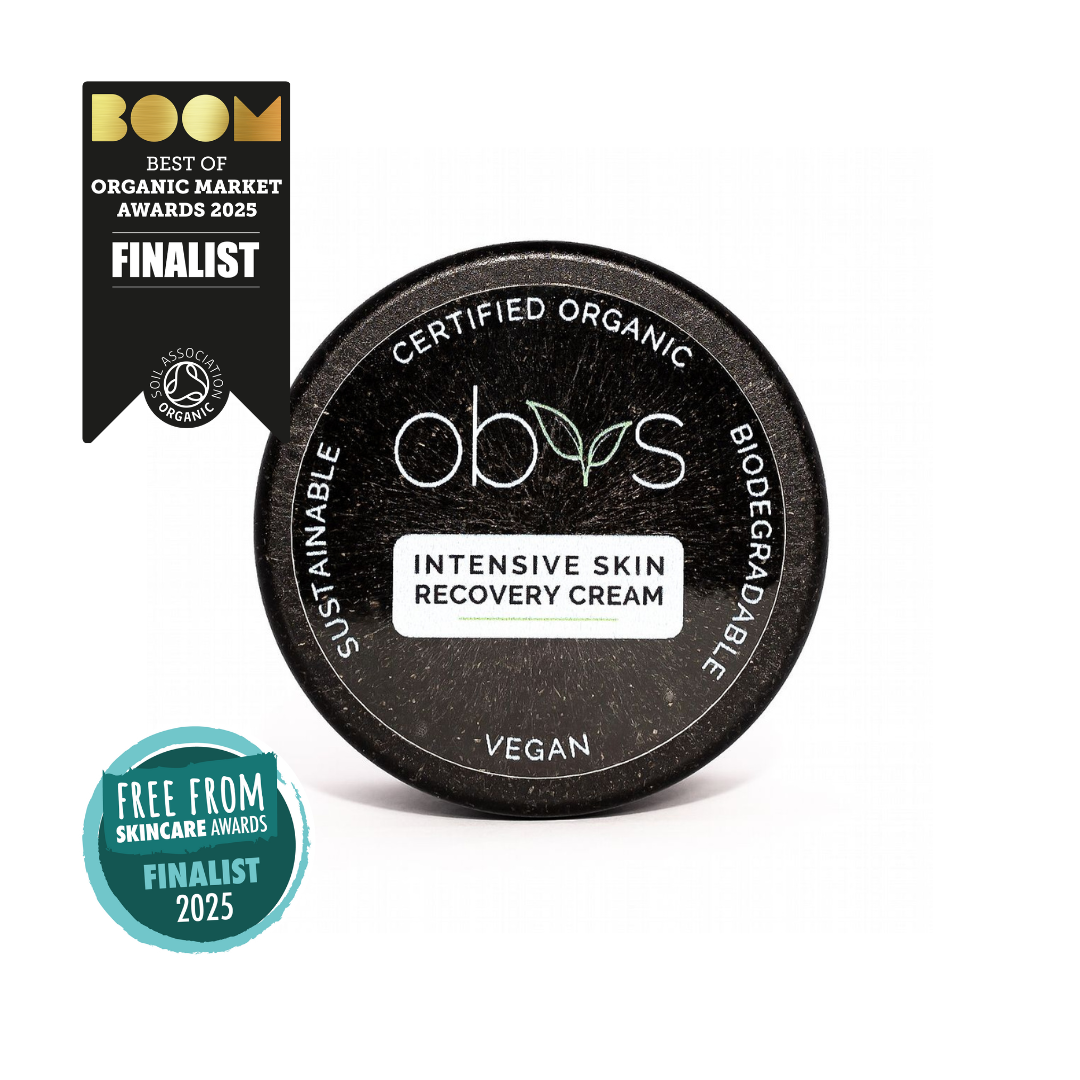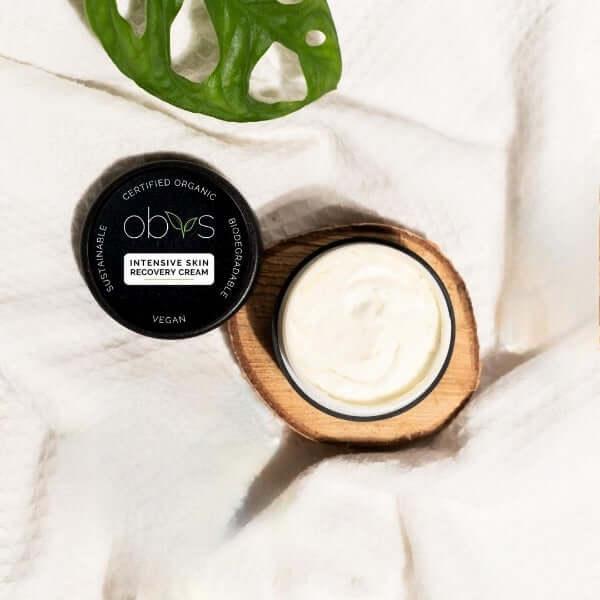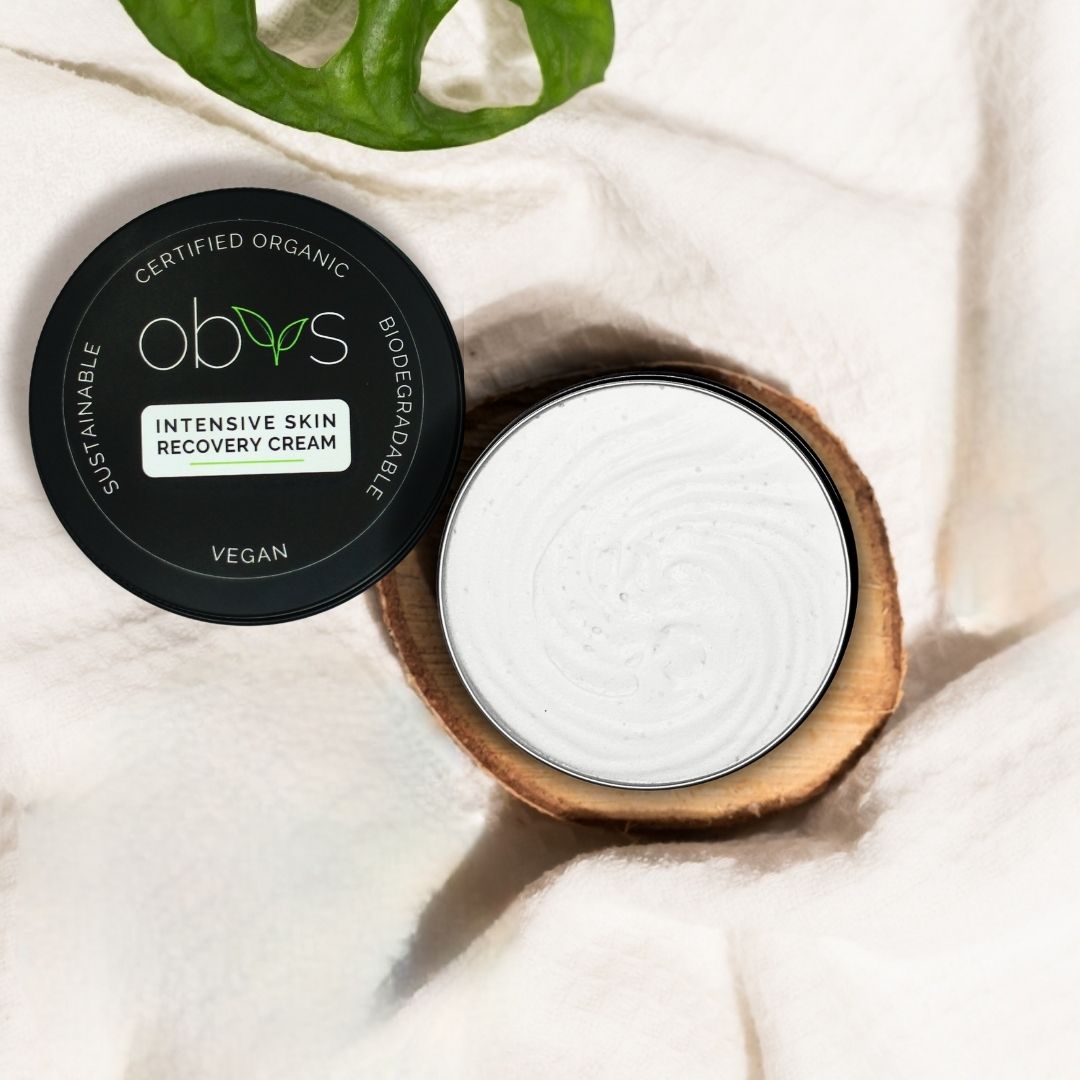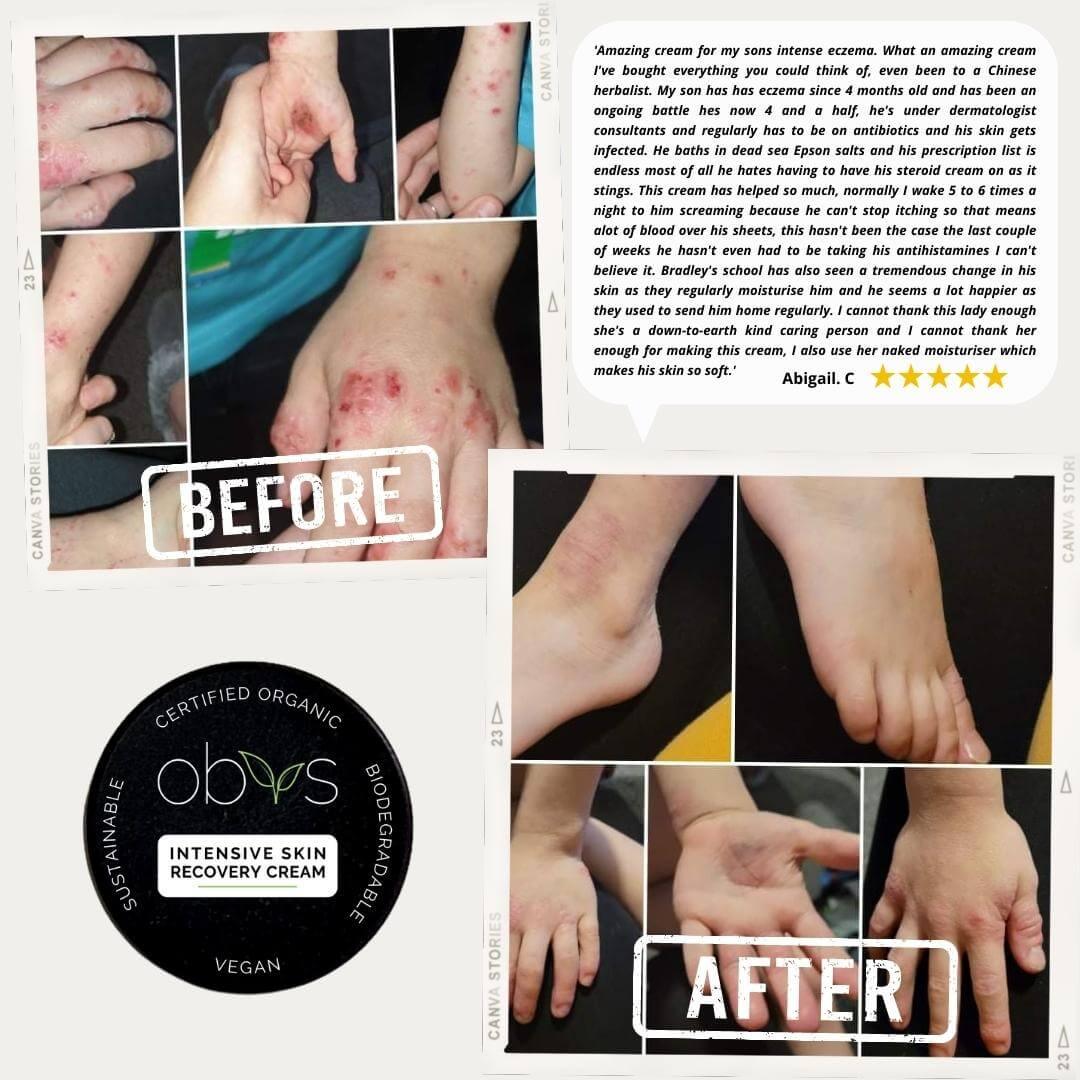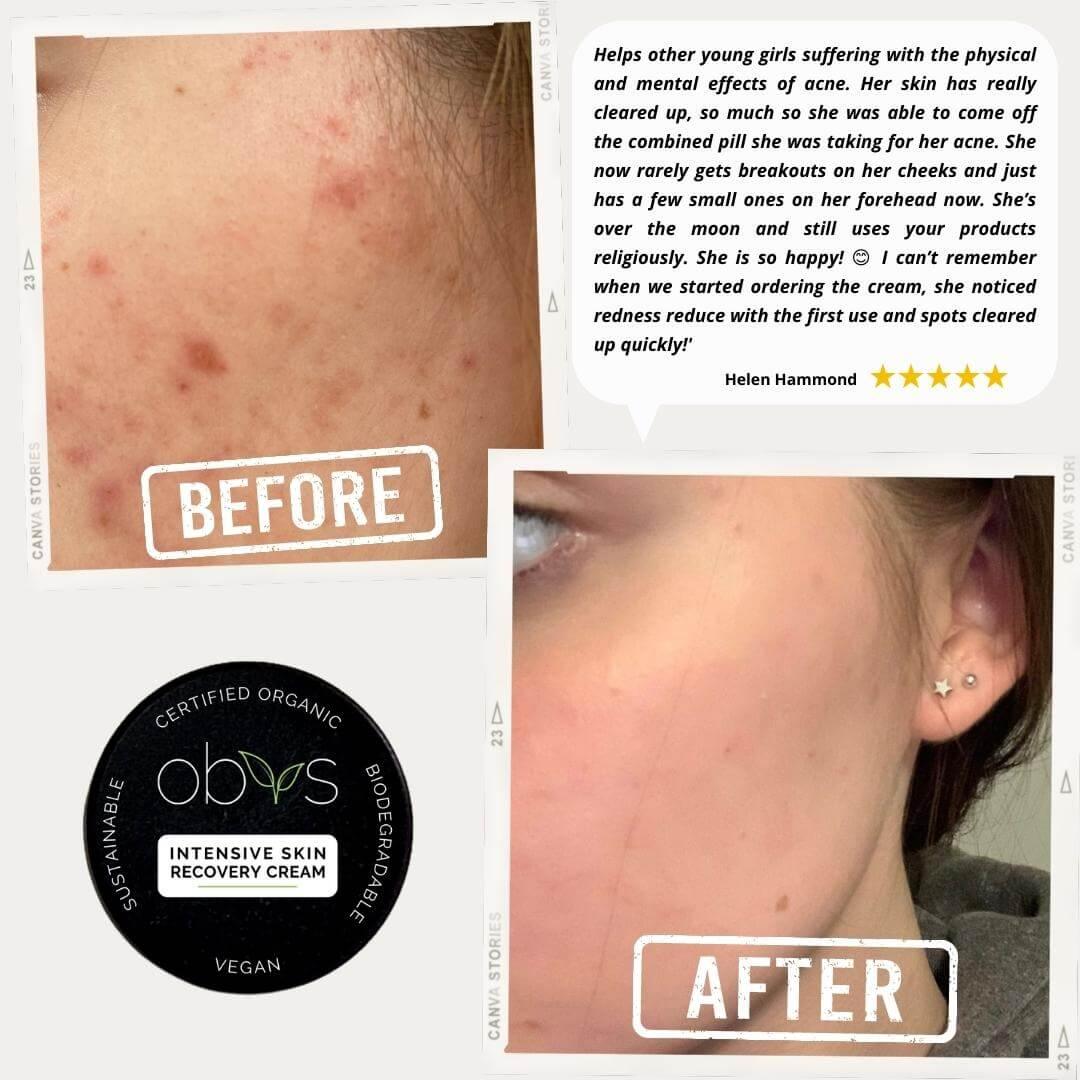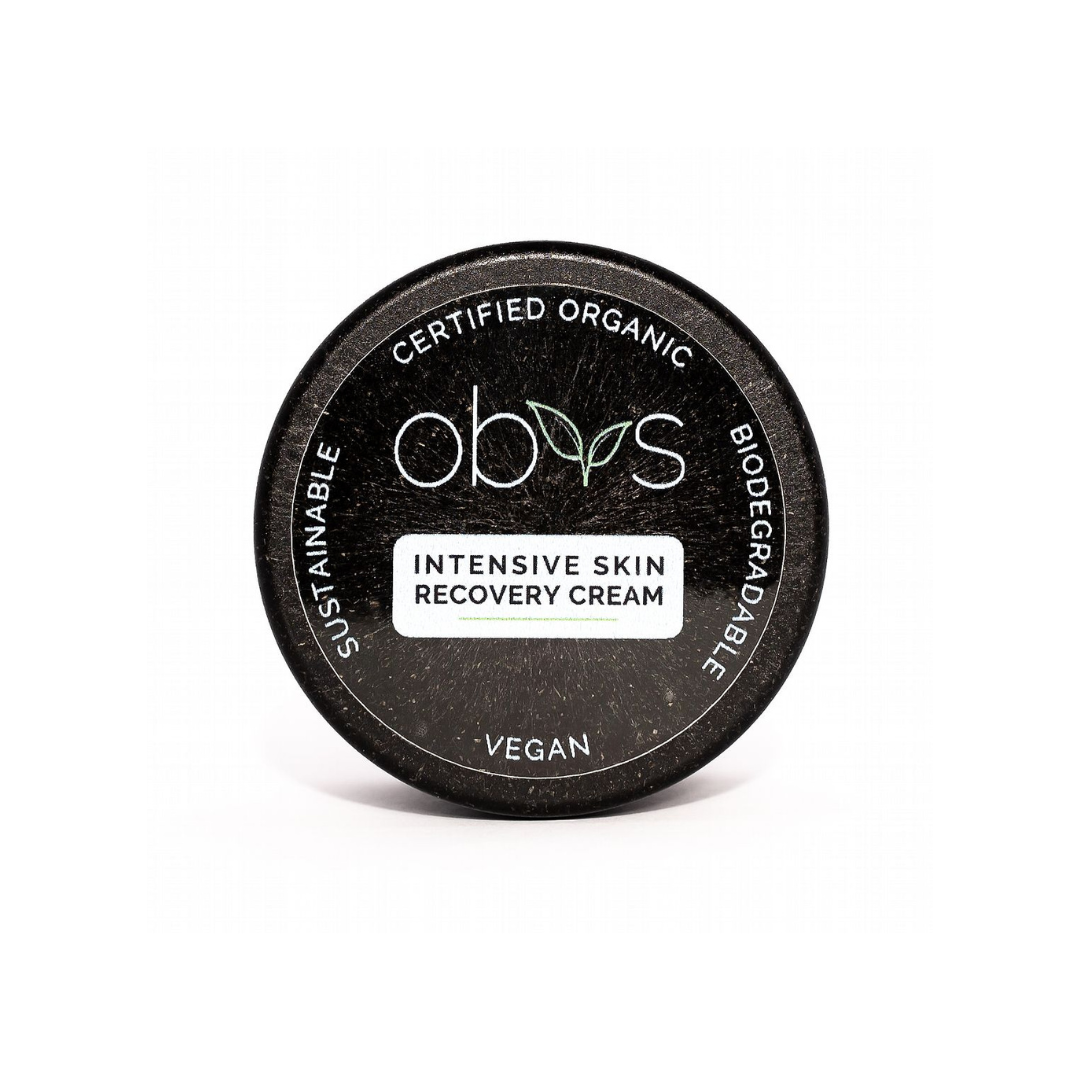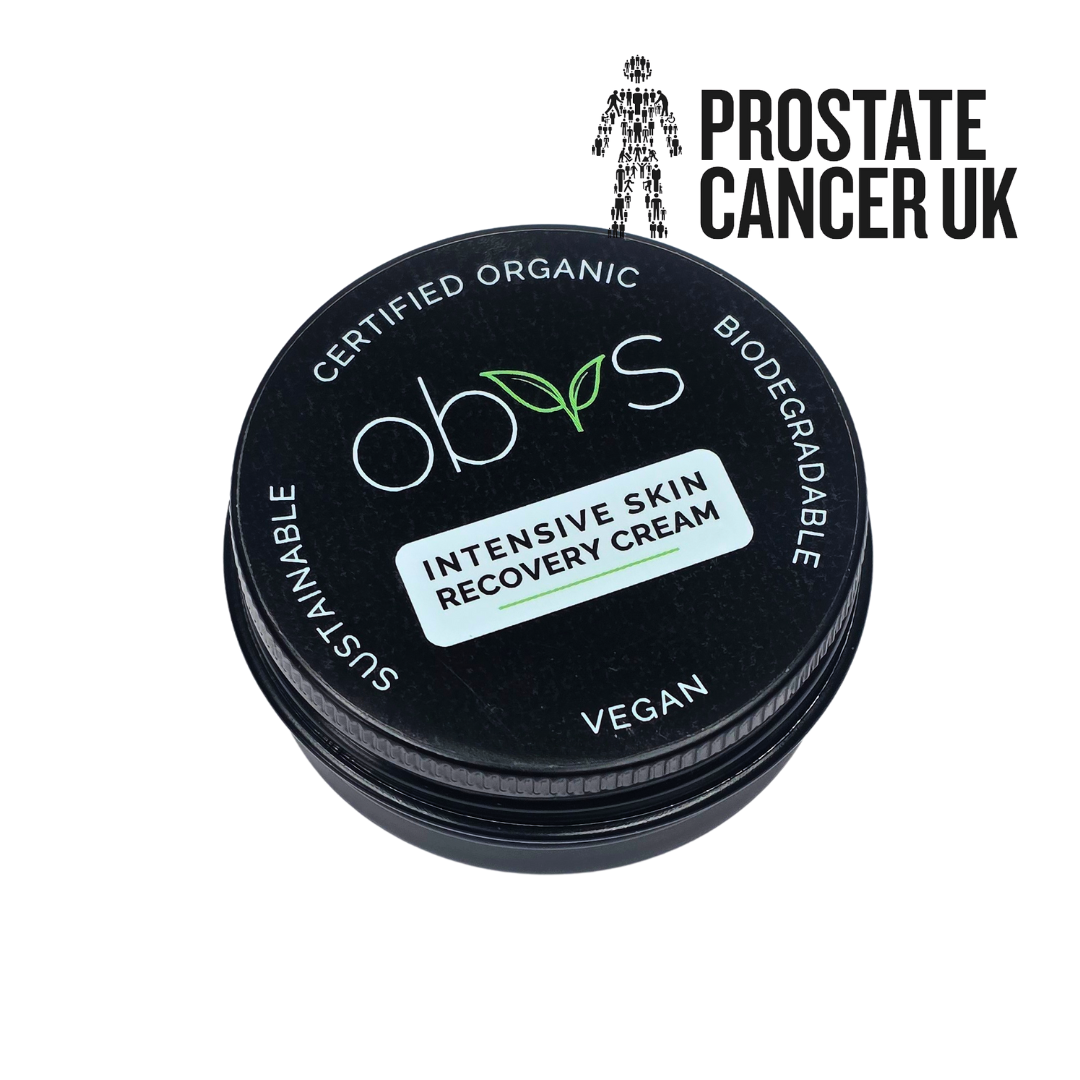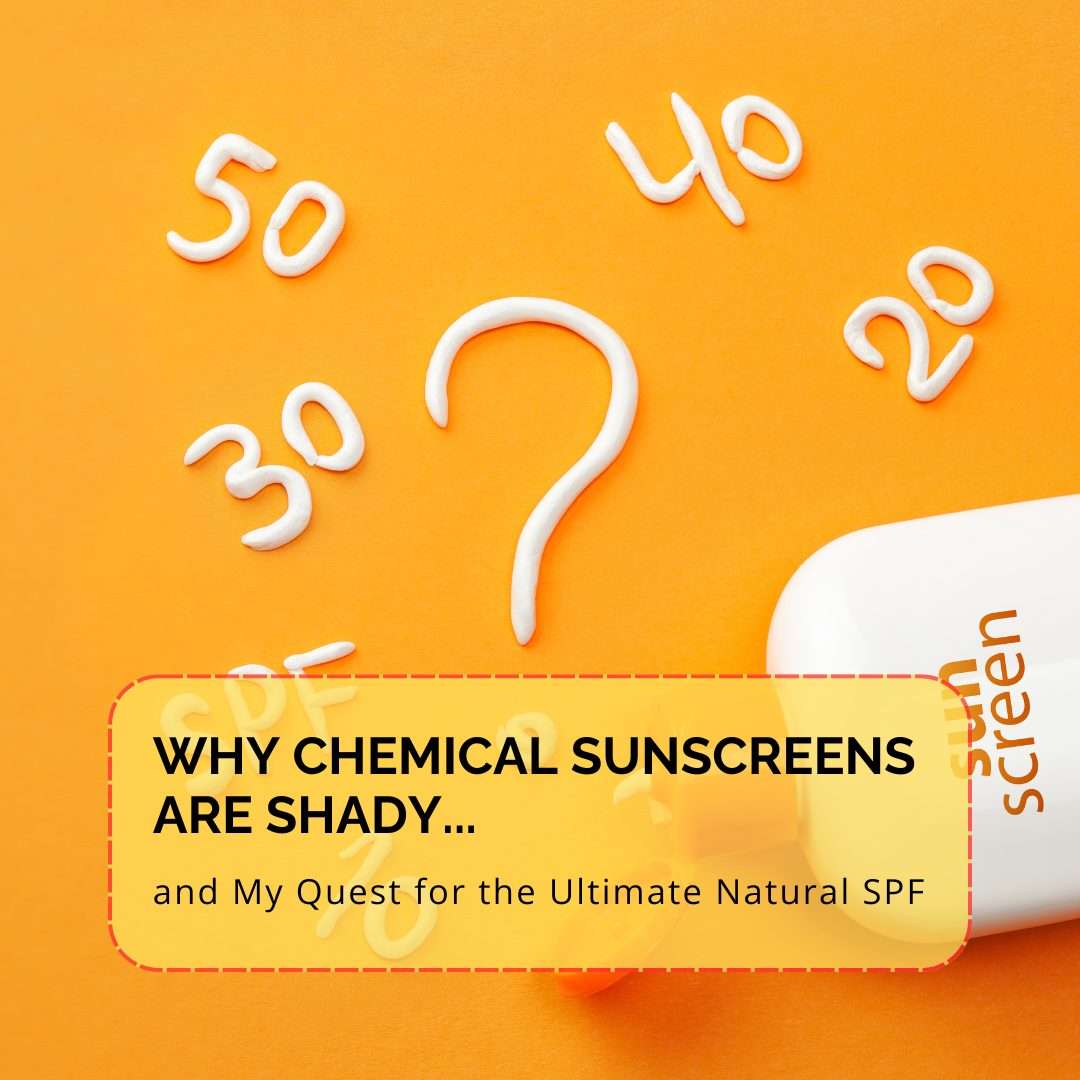
Why Chemical Sunscreens Are Shady and My Quest for the Ultimate Natural SPF
Share
Hello, sunshine lovers! I’m Sian, and I’m on a mission to create the best natural SPF that doesn’t cost an arm and a leg, doesn’t make you look like Casper the Ghost, and doesn’t melt into a soupy mess the second it hits 25°C.
Let’s talk sunscreen—specifically, why I’m fed up with toxic chemical sunscreens, why natural mineral sunscreens can be a pain, and why I’m formulating a cruelty-free, vegan, COSMOS Organic-certified mineral SPF that’s actually affordable. Buckle up, because we’re diving into the science, the shady stuff, and my quirky journey to make sun protection better.
My Story: Why This Matters to Me
A few summers ago, I was going through IVF, slathering on chemical sunscreens without a second thought. Looking back, I wish I’d known about the dodgy ingredients I was putting on my skin. Maybe things would’ve turned out differently—who knows? But if they had, I wouldn’t be here building Obvs Skincare, my passion project to create a sunscreen I can trust. I’m not just doing this for me; I’m doing it for everyone who wants sun protection that’s safe, ethical, and doesn’t break the bank.
The Problem with Chemical Sunscreens: Not My Cup of Tea
Chemical sunscreens? Not my vibe. They’re the ones you find in sprays or lotions boasting SPF 50, but they’ve got ingredients that make me wince. Think oxybenzone, avobenzone, octinoxate, homosalate, and others like fragrance and phenoxyethanol. The UV filters (like oxybenzone and avobenzone) work by absorbing UV rays, turning them into heat, and releasing that heat from your skin. Sounds clever, but there’s a catch. Here’s why I’m steering clear.
Why Chemical Filters Are Used
Chemical UV filters are cheap as chips. They’re often derived from petrochemicals, which keeps production costs low for big brands. They blend smoothly into lotions or sprays, feel lightweight, and don’t leave a white cast. But the downsides? They’re not worth it.
Why I’m Not a Fan of These Ingredients
Oxybenzone and Homosalate (Endocrine Disruptors): These can mess with your hormones. A 2016 study showed oxybenzone mimics oestrogen, potentially disrupting your endocrine system. A 2020 study found these chemicals build up in your bloodstream after just a few days of use. [Ref 1, 2]
Octinoxate (Skin Irritation): Octinoxate can cause contact dermatitis, especially for those with sensitive skin. A 2019 study confirmed it’s a common culprit for allergic reactions. [Ref 3]
Fragrance (Allergies and Irritation): Fragrance is a vague term that can hide hundreds of synthetic compounds. A 2018 study linked fragrance in cosmetics to allergic contact dermatitis and respiratory issues in sensitive individuals. I want my sunscreen to be hypoallergenic and kind to sensitive skin, so fragrance is a hard no. [Ref 4]
Phenoxyethanol (Potential Toxicity): This preservative extends shelf life, but it’s not as innocent as it seems. A 2021 study raised concerns about its potential neurotoxicity and skin irritation, especially in high concentrations or with repeated use. I’m formulating for sensitive skin, so I’m avoiding this one. [Ref 5]
Environmental Impact: Oxybenzone and octinoxate are toxic to marine life, especially coral reefs. A 2015 study estimated 14,000 tons of sunscreen wash into oceans yearly, with oxybenzone causing coral bleaching and harming fish reproduction. [Ref 6]
Petrochemicals and Microplastics: Many chemical sunscreens use petrochemical-derived ingredients or microplastics (like acrylates copolymer) for water resistance. These don’t biodegrade, polluting waterways and harming wildlife. [Ref 7]
These ingredients are cheap to produce, but the cost to our health, sensitive skin, and the environment is too high.
Why I’m Team Mineral Sunscreen (But Not Nano)
So, why not just use natural mineral sunscreen? Mineral sunscreens use zinc oxide or titanium dioxide to physically block UV rays, sitting on your skin like a shield. They’re generally safer for your body and the planet. But many natural SPFs are wildly expensive (£40 for 50ml? That’s barely enough to cover my body two or three times—unless I’ve got more surface area than most, ha!) or they melt in the heat, separate into an oily mess, or have a weird smell. I’ve had “premium” mineral sunscreens turn into a gloopy disaster in my beach bag. No thanks.
Then there’s nano vs. non-nano minerals. Nano-sized zinc oxide or titanium dioxide particles are tiny (less than 100 nanometers), blending better to avoid the white cast. But nano particles can harm marine life, slipping through water treatment systems and affecting fish and coral. A 2018 study raised concerns about nano-titanium dioxide’s eco-toxicity. [Ref 8] Non-nano zinc oxide is larger, stays on your skin’s surface, and is safer for the environment, so that’s my go-to.
Personally, I like the white cast from non-nano zinc oxide—it shows me where I’ve applied it, which was a lifesaver when I was a nursery nurse making sure the kids were fully covered. But my husband, who’s Black, isn’t a fan—it’s too noticeable on his skin. So, I’m working on a formula where the white cast is visible for a minute or so (to check coverage) then fades. I’ve found a non-nano zinc oxide that can do this, but it’s pricey, and the minimum order quantity (MOQ) is massive. Small business struggles, am I right?
My Struggles with Natural Sunscreens
Formulating a natural mineral sunscreen that works is no picnic. Many natural SPFs use waxes or oils that feel heavy and greasy, and when they get hot, they melt or separate (splitting into oil and water layers). This happens because natural emulsifiers struggle with heat stability. I’ve tested “organic” sunscreens that turned into a science experiment gone wrong by lunchtime.
Then there’s the cost of ingredients. Organic, non-comedogenic oils like safflower oil (no coconut oil for me—it can clog pores, and I’m keeping this hypoallergenic) and COSMOS Organic-certified actives are expensive. The MOQs for these are often out of reach for a small business like mine. But I’m determined to make it work because I’m done with overpriced, underperforming products.
My Dream SPF: Ethical, Effective, and Affordable
I’m in the early stages of formulating a cruelty-free, vegan, COSMOS Organic-certified mineral sunscreen that’s fairly priced and hypoallergenic for sensitive skin. It’s tough as a small business—I can’t hit those huge MOQs, and organic ingredients cost a pretty penny. But I’m hustling to find suppliers who’ll work with me because I’m fed up with chemical sunscreens and natural SPFs that don’t deliver.
Here’s what I’m aiming for:
- Non-nano zinc oxide for safe, effective UV protection.
- A natural emulsifier I’ve sourced that keeps the formula stable, even in the heat (no more separating!).
- A natural preservative system that’s paraben-free and supports your skin’s microbiome, keeping the sunscreen fresh without harsh chemicals.
- Plastic-free packaging (I’m eyeing aluminium tubes, but the MOQ for custom printing is 10,000 units, which is way too high for me right now).
- A white cast that’s visible for a minute to check coverage, then fades for all skin tones.
I’m also done with greenwashing. Brands love to slap “natural” on their labels, but unless they’re Soil Association COSMOS Organic certified, I’m not buying it. COSMOS Organic means strict standards for ingredients, sustainability, and ethics. That’s the standard I’m setting for my SPF.
The Good News
I’ve got some wins! I’ve found a natural emulsifier that’s COSMOS-approved and keeps my formulation stable—no melting or separating. I’ve also sourced a natural preservative that’s kind to sensitive skin and supports your microbiome. My sunscreen won’t be ready until next year (formulation is a slow process when you’re a perfectionist), but I’m buzzing. It’ll be an SPF you can trust—effective, ethical, and great value.
A Disclaimer: SPF Is Better Than No SPF
I’m not here to scare you off sunscreen. UV rays cause skin cancer, with over 100,000 new cases diagnosed in the UK annually. [Ref 9] If you’re choosing between a chemical SPF or nothing, use the SPF. But if you can, opt for a non-nano zinc oxide mineral sunscreen. It’s safer, eco-friendly, and won’t mess with your hormones or the coral reefs.
Got Ideas for Plastic-Free Packaging?
I’m still puzzling over packaging. Aluminium tubes are my dream, but the 10,000-unit MOQ is a hurdle. If you’ve got ideas for plastic-free, practical packaging that’s affordable for a small business, please let me know! I need something user-friendly, leak-proof, and planet-friendly.
Why This Matters
I’m tired of choosing between sunscreens that might harm my body, the environment, or my bank account. I want an SPF that’s effective, ethical, and affordable—and I know I’m not alone. Plus, I love a challenge. Formulating a hypoallergenic, COSMOS Organic, vegan sunscreen that ticks all my boxes? That’s my kind of fun.
Thanks for joining me on this journey. Stay tuned for updates on my natural mineral sunscreen, and let’s keep chatting about how we can protect our skin and the planet.
Sunburn Relief
If you’ve overdone it in the sun (we’ve all been there!), our Intensive Skin Recovery Cream is your skin’s new best friend. Formulated with soothing, organic, non-comedogenic ingredients like organic safflower oil and COSMOS-approved actives, it calms redness, hydrates parched skin, and supports your skin’s natural repair process without clogging pores. Its hypoallergenic, vegan formula is perfect for sensitive skin, delivering relief from sunburn’s sting while keeping things ethical and planet-friendly. It’s the perfect rescue for those rare sun mishaps!
References
- Janjua, N. R., et al. (2016). Systemic absorption of sunscreen filters after topical application. Journal of Investigative Dermatology.
- Matta, M. K., et al. (2020). Effect of sunscreen application on plasma concentration of sunscreen active ingredients. JAMA.
- Avenel-Audran, M., et al. (2019). Contact dermatitis from octinoxate in sunscreens. Contact Dermatitis.
- Basketter, D. A., et al. (2018). Fragrance allergens in cosmetic products. Contact Dermatitis.
- Dréno, B., et al. (2021). Safety of phenoxyethanol in cosmetics: A review. Journal of the European Academy of Dermatology and Venereology.
- Downs, C. A., et al. (2015). Toxicopathological effects of the sunscreen UV filter, oxybenzone, on coral planulae. Archives of Environmental Contamination and Toxicology.
- Browne, M. A., et al. (2011). Microplastic—an emerging contaminant of concern. Environmental Science & Technology.
- Grande, F., & Tucci, P. (2018). Titanium dioxide nanoparticles: A risk for the environment? Mini Reviews in Medicinal Chemistry.
- Cancer Research UK. (2023). Skin cancer incidence statistics.


